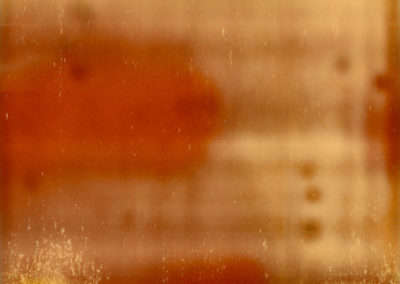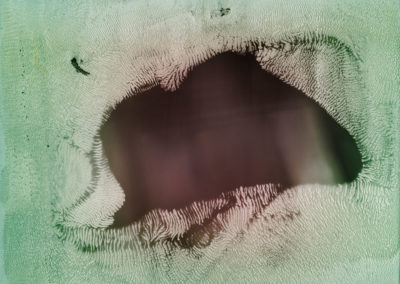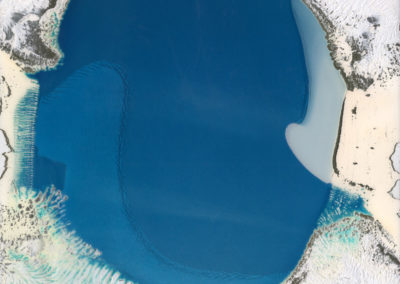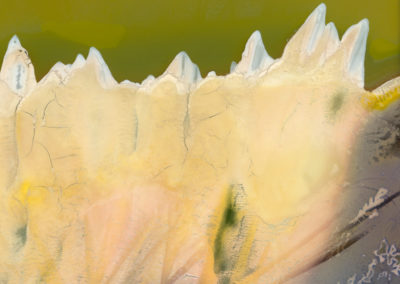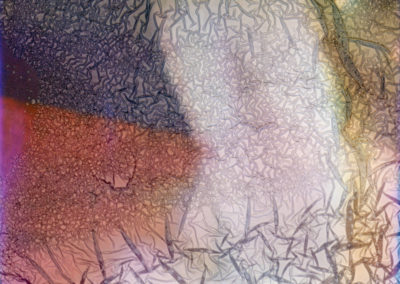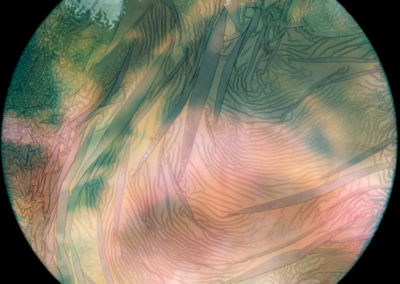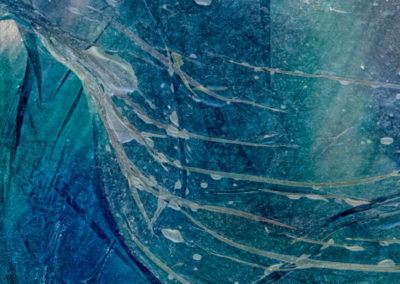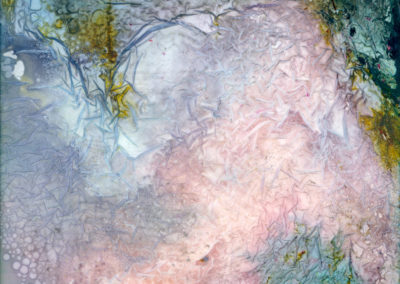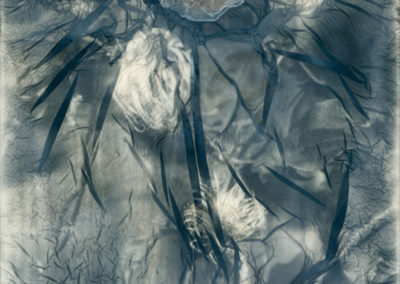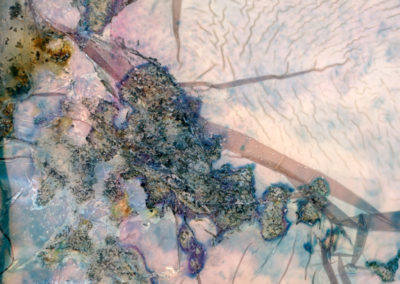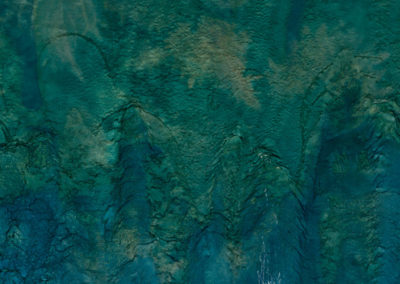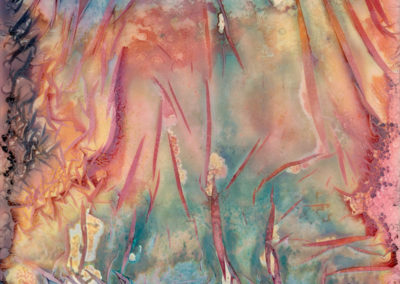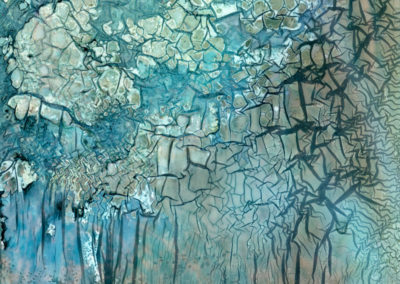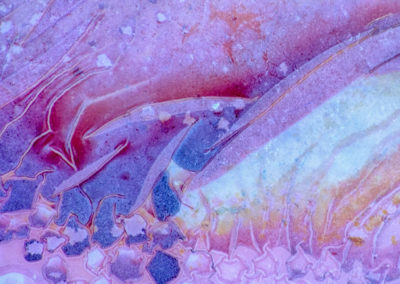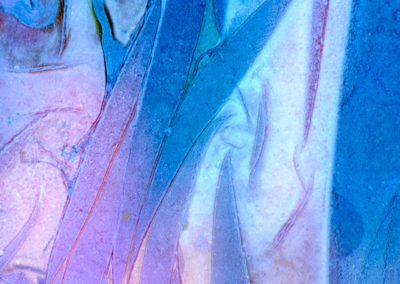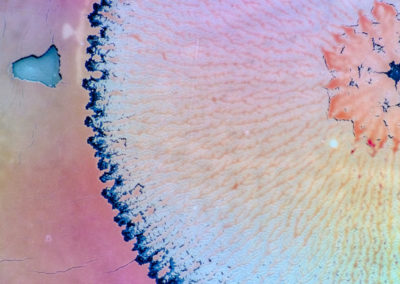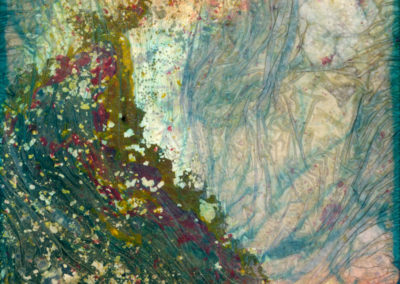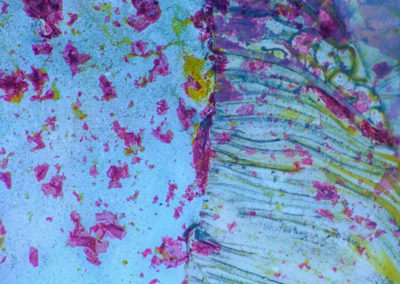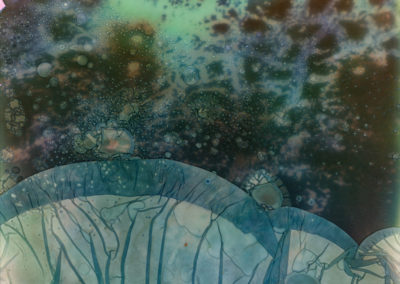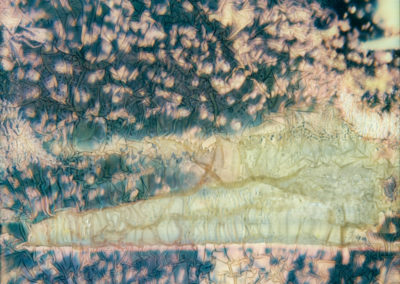Embarking on a project often results from a belated realisation that the work you’ve been producing has something about it; that links, that has coherence. It is rare that it occurs for me with images more than a few weeks or months old. It was even more unlikely that it would be with a medium such as Polaroid, something I have rarely shot with over the years.
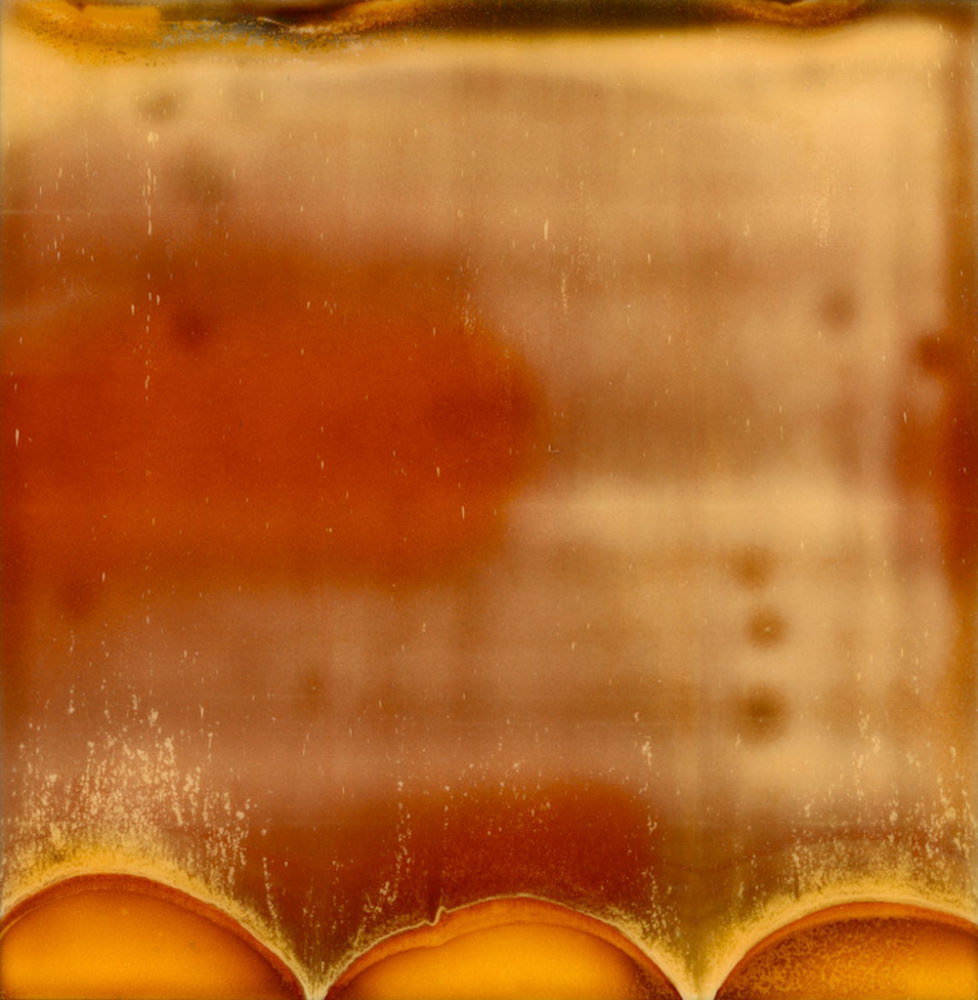
The Warped Topographies series began over three years ago, with an accidental eject from my faulty SX-70. [The SX-70 is the classic folding Polaroid camera, it’s an SLR that folds flat when not in use. Prise it apart, click it into place and it is ready to use.] Without knowing a huge amount about Polaroid, the way they worked (or sometimes didn’t), their cultural significance and their contribution to photographic history, I admired the abstract blobs that appeared from the camera on that day. What emerged was something otherworldly but beautiful. At the time, I put it away but every so often it reappeared as I looked for something else and I still liked it.
Having returned from a special trip last February, I felt I needed a rest from shooting digital and returned to my, now no longer faulty, SX-70 and used Impossible Project films. Taking on board the experience of the previous accidental eject and further research into how the Polaroid process works, I manipulated the films as they ejected from the camera, firstly by hand and later using heat, fire and water.
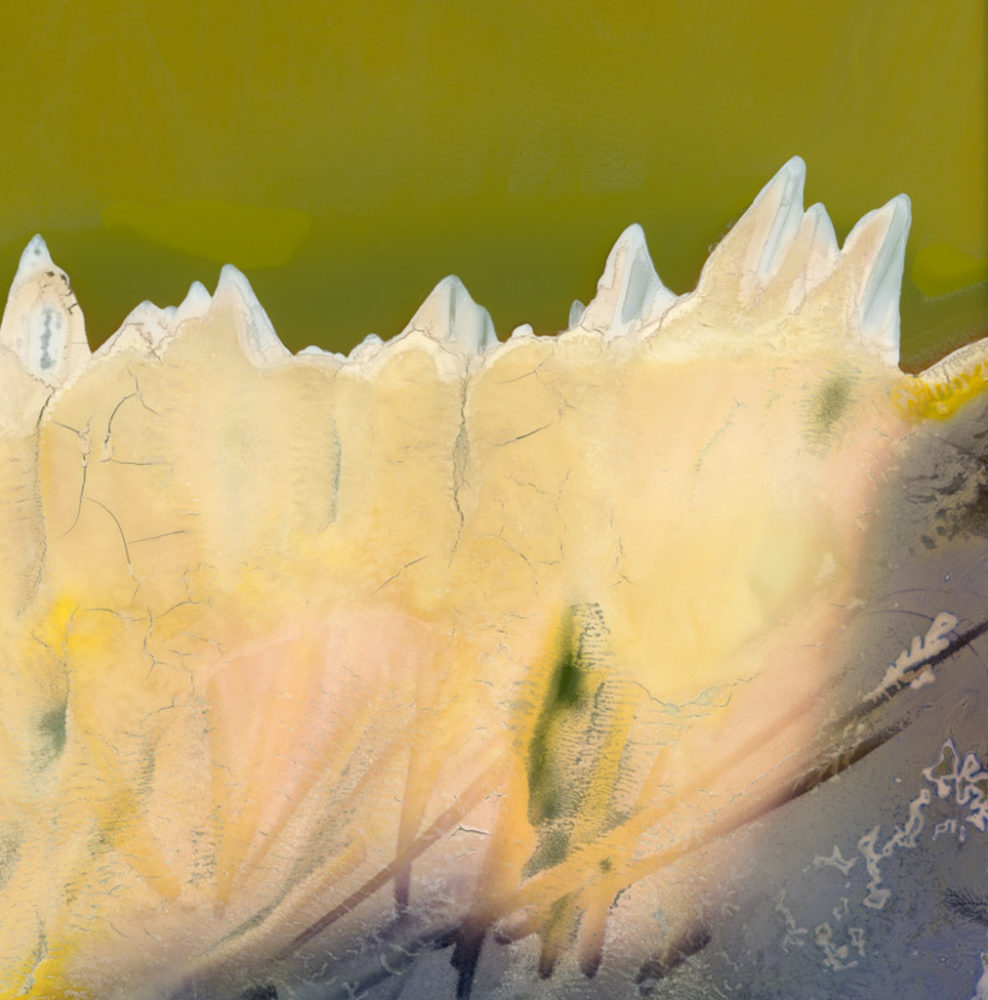
Increasingly the images emerging from their processing became more and more interesting and, to me, resembled aerial landscapes and satellite imagery, with tortured lands, disrupted river flows, impenetrable forests, glacial melts and ice flows all appearing in these fractured works.
As the project coalesced and I researched more I found the works of photographers David Maisel and Edward Burtynski, who specialise in large scale work showing man’s impact on the environment, Paul Kenny’s fabulous chemical imagery, Timo Lieber’s Arctic photography, and I rediscovered the work of Emmet Gowin who many years before I had spoken with when designing a book cover. I knew him for his simpler imagery of his wife, Edith, yet there was a whole other side of environmental aerial imagery which I had been unaware of. Even drone photography found on Instagram had echoes of the work I was producing.
These all reinforced the concept that these small-scale works were handmade imagined landscapes from this and other worlds.
ABOUT RICHARD EARNEY
You can view more of Richard’s work on his website and other online presence:
Website: method.photo
Twitter: @methodphoto
Instagram: @methodphotonew
CREDITS
Unless otherwise stated, all words and images in this article are © Richard Earney

